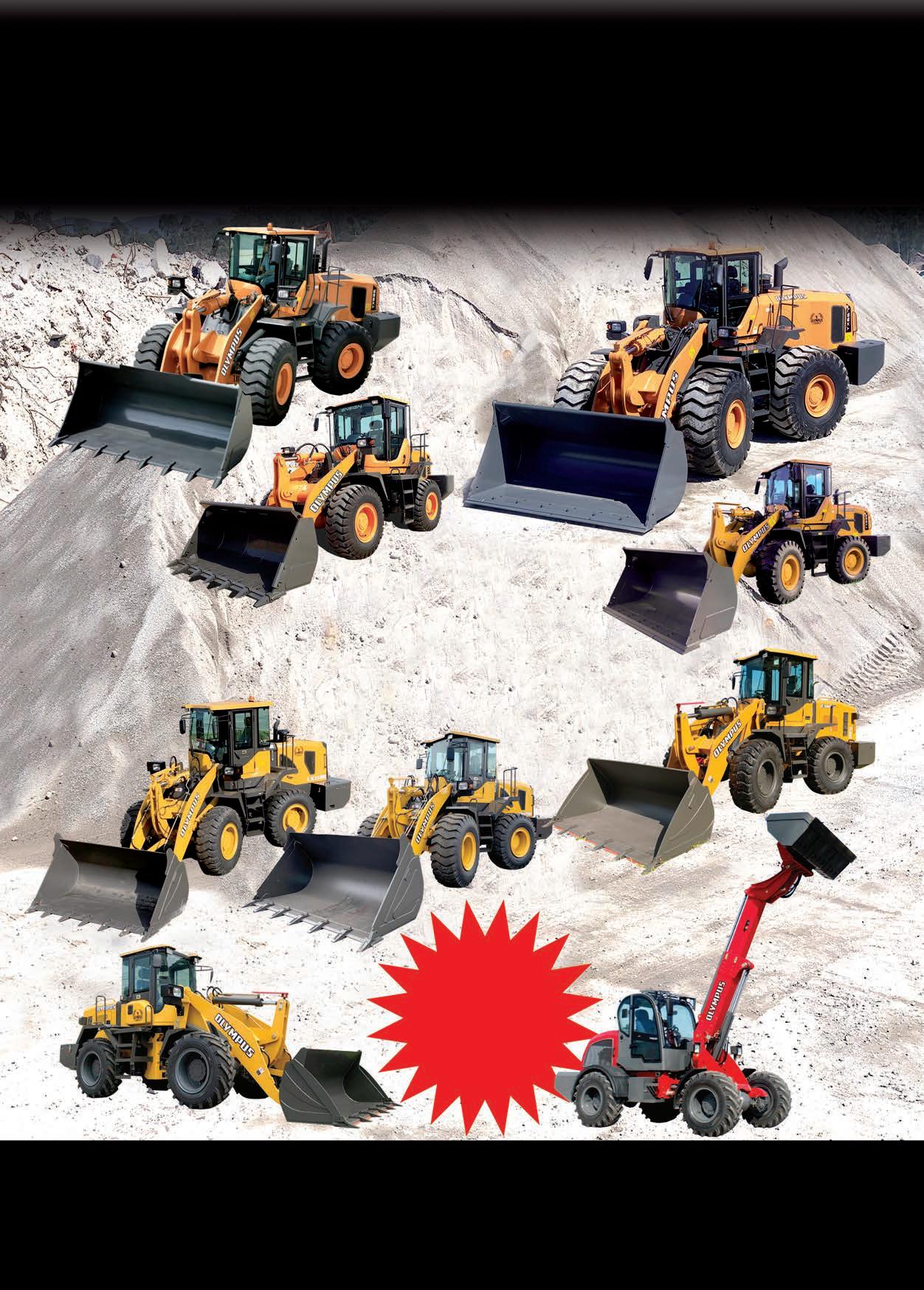
7 minute read
Unleash the Beast
In 2013 Jaiden Drought tested a machine he said would keep everyone happy – with a comfortable, stressfree environment and reliability, high output and low running costs.
John Deere 7550i
Type
PowerTech Plus
Model
6135HZ Displacement (L) 13.5 Cylinders In-line six
Engine rpm/min on road mode (three speed GB)
1,650
Fuel system
Four valves + EGR + VGT Cooling fan drive Direct
Maximum power @ 1,900rpm/kW (hp)
458 (625)
Rated power @ 2,100rpm/kW (hp)
428 (582) Extra power kW (hp) 30 (43) “ You send a technician to fix the other brands but you send a blacksmith to fix the John Deere,” a contractor, who has run every other brand of forager on the market and come back to a John Deere, said to me recently. Having test driven the John Deere 7550i self-propelled forage harvester, I can see what he means. It has all the technology you need, offering some of the most high-tech crop assessment technology on the market, yet it feels like a hurricane of power is behind you. John Deere has been building choppers for 40 years, the past 20 years at its dedicated plant in Zweibrucken, Germany. In total, it has produced well over 10,000 self-propelled harvesters and, judging by this machine, it must be doing something right. Owners, operators and farmers alike will not be disappointed by this machine’s throughput.
CAB
It all starts in the clean and uncluttered cab. As with all John Deere cabs, the brown tones will hide any dirty fingerprints left from getting in and out all day. Given how noisy this machine is outside, I was pleasantly surprised by how quiet it was in the cab, with John Deere claiming 74-76dB(A). All the key controls are on the CommandArm, with the majority of operating functions on the ‘hydro handle’, including programmable header position buttons, spout rotations and header height controls, feed roll direction and an emergency shut-off. Additional adjustment buttons, such as chopping length and spout speed adjustment, are on the arms console. Machine instrumentation is on the ‘A’ pillar. The top display is devoted to machine functions, the middle panel to the performance monitor display and the lower panel shows such items as engine and cutter head speed and fuel levels. The metal detector, as well as some of the auto guidance functions, is located above your head. One thing is definitely noticeable about this chopper — it feels as if the cab has been moved back slightly and the pickup seems to be in clear view, without feeling like you are bending over. On the main joystick there are programmable header functions set up, so by pushing button ‘one’ the header is dropped, while button ‘three’ lifts the front once out of the row – simple and easy to use.
ENGINE AND DRIVE
The 7550i sits at third in the six-model line-up. However, it possesses the same 13.5-litre, in-line six-cylinder engine (with the usual VGT turbo and four valves per cylinder) as the larger 7750 does. This thing is a big grunt box and I’m not surprised given all of these ponies on tap, even though the cutter heads and feed rollers are only 20mm narrower than on the larger 7750. John Deere’s engine-speed management works in conjunction with the stepless Pro-Drive hydrostatic transmission to match engine rpm and power to requirements under different conditions when running under a light load (both in work and at headlands), stationary or travelling on the road. Because this machine is the 7550i,the ‘i’ (or ‘intelligent’) management package has three modes, all aimed at maximising harvester performance while also saving fuel:

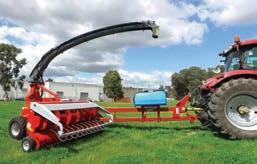
Looking for a
harvester?
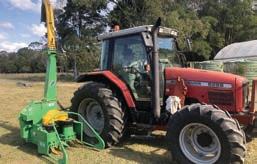
Search for ‘harvester’ on
TradeFarmMachinery.com.au
or type the TA or DIY code shown here into the keyword search field
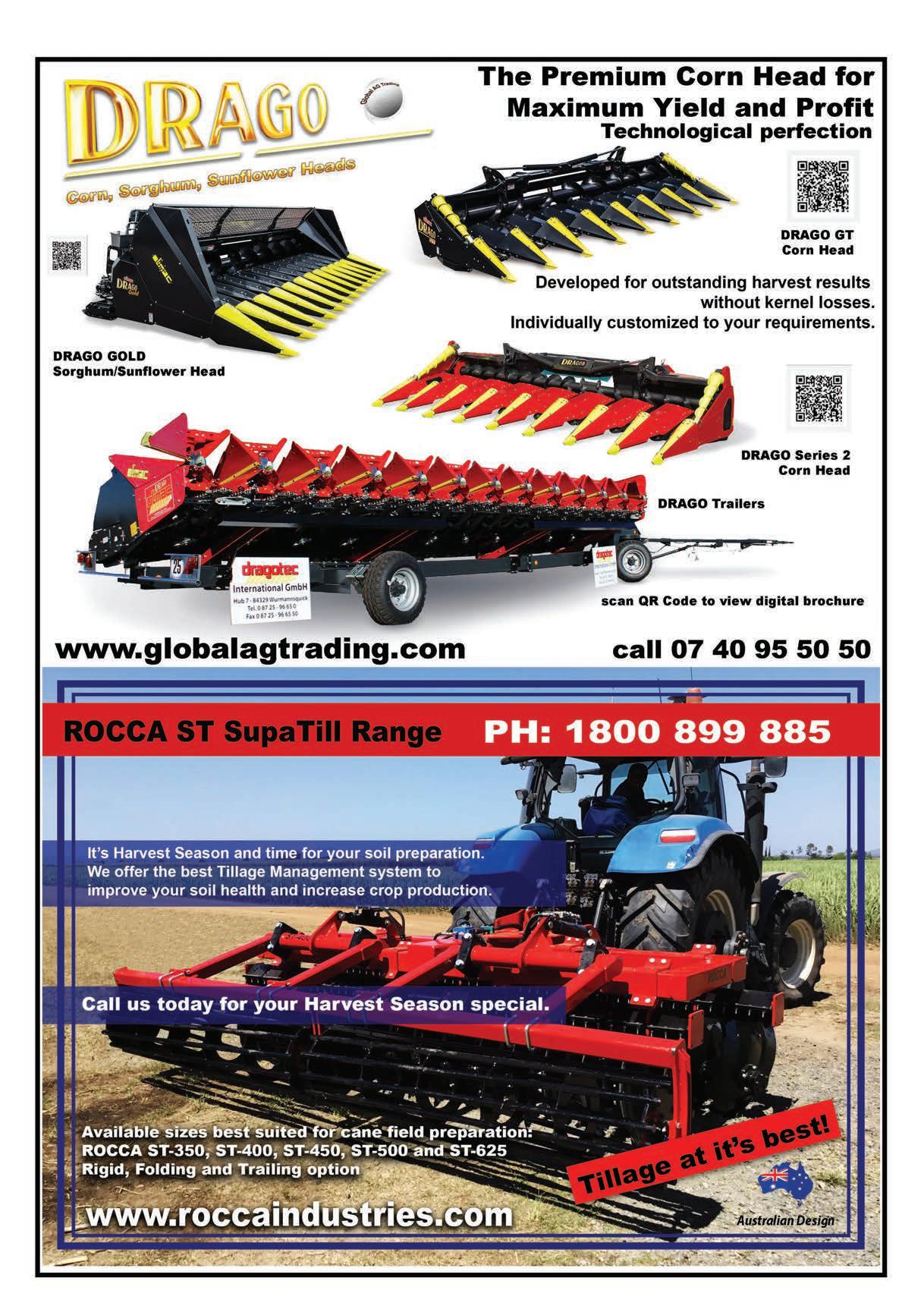
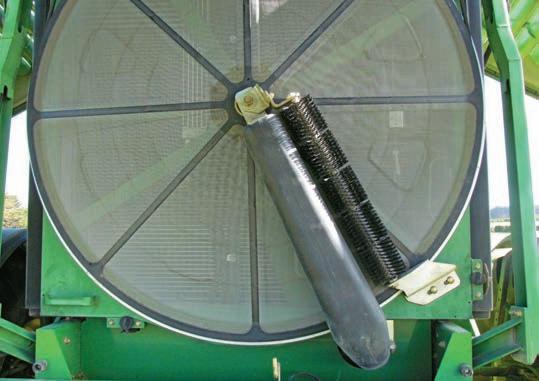
1

3 2
4

1. The 7550i boasts a big grunt box 2. The large radiator cleaner keeps the 13.5-litre, in-line six-cylinder engine cool 3. A large, curved front and rear windows offer excellent visibility 4. Counterweights are concealed under the machine to provide ballast
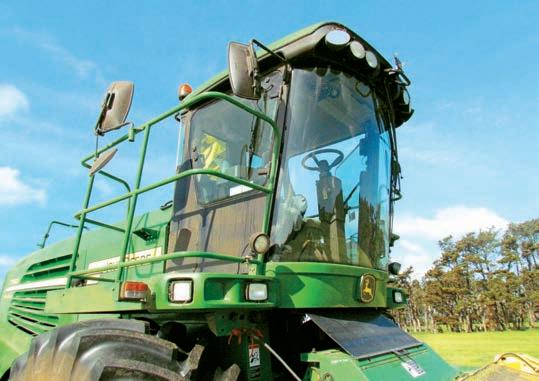
Pluses
Clear view of the pick-up frominside the cab, without leaning forward Metal detector tells you what side has identified the foreign object IVLOC on the move Machine never felt like it was running out of power Crop flowed smoothly through the machine and never felt like it was surging Intelligent crop assessment technology, which is a great tool for invoicing customers Programmable header functions make operating the front easy Quiet comfortable cab
Minuses
The 800/65 R32 tyres are too big. Getting around the farm was an issue The pick-up wheels need to be manually removed to get through some gateways, although the new pick-ups have a hydraulic folding feature • Road mode – active between 1,250 and 2,100rpm, the system reduces engine rpm to a minimum and provides up to 27 per cent more torque to maintain forward speeds. • Field mode one – this is a headland fuel-saving mode automatically reducing engine speed once the machine is clear of the crop. As soon as the forager enters a new swath, the engine speed is automatically increased to the rpm set by the operator. • Field mode two – during work this setting automatically maintains a constant load on the forager engine so it operates at its most fuel-efficient speed of 1,900rpm. If the crop thickens, the forward speed is pegged back but the engine rpm remains the same.
SAFETY FEATURES
The slotted knives push back if they hit a rock, minimising the damage and helping prevent costly downtime. The unique feed roll and cutter head transmission (IVLOC) lets you choose the exact length of cut you want from the cab. It maintains a constant speed to ensure you get the length you set. The reverse sharpening system strikes the heel of the knife first, drawing the stone across the face toward the edge. This hones the edge into a fine cutting point – maintaining the bevel on the knives gives you more efficient chopping for the entire life of the knife and ensures the knives stay sharper for longer. An improved metal detector will stop the feed roller in just 40 milliseconds and, where a blockage occurs, the pick-up can be reversed on the joystick. A very clever feature is the light display in the cab showing in what area of the pick-up the detector has spotted a foreign object, making it quick and easy to find.
OPTIONAL I-PACKAGE
The 7550i test machine was fitted with Auto LOC, which links HarvestLab dry matter sensing with the IVLOC automatic length of cut transmission. HarvestLab measures crop moisture using a near-infrared sensor. It can be used to help optimise the crop’s chop length in relation to its dry matter content – moisture content measurement of + or -2 points on the go for instant readouts. This is particularly useful for operators who are chopping maize for sale to various clients, as the HarvestLab and Harvest Doc will tell you when you have reached 100T/DM for example, filling their order. Harvest Doc is the yield metering and crop recording system, permanently stored in the machine’s computer. This is a great tool for invoicing clients to let them know 10ha of their maize has been chopped, yielding 22TDM/ha, with attached map to prove it. The infinitely variable length-of-cut (IVLOC) feature gives you lengths of either 4–19mm with 56 knives, 5–22mm with 48 knives and 6–26mm with 40 knives, all with adjustment increments of one millimetre. The knives can be sharpened by pushing a button in the cab, with this function able to be interrupted if required, although those who already run foragers will understand the fuel savings and increased output from running sharp knives.

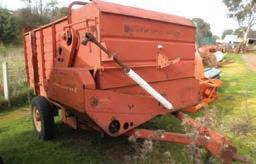
Looking for a
harvester?
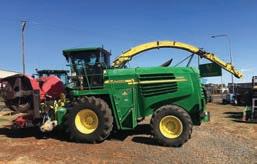
Search for ‘harvester’ on
TradeFarmMachinery.com.au
or type the TA or DIY code shown here into the keyword search field

